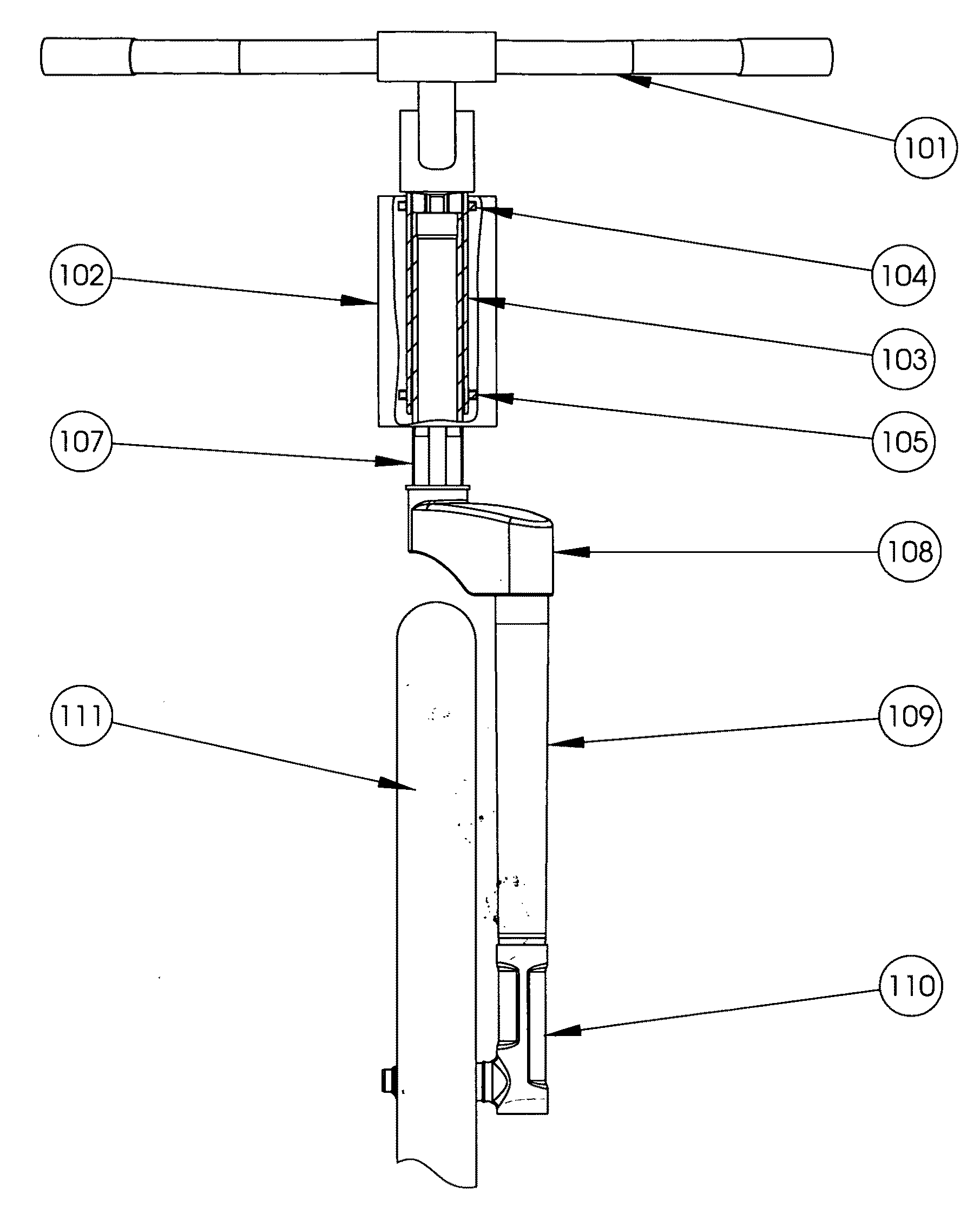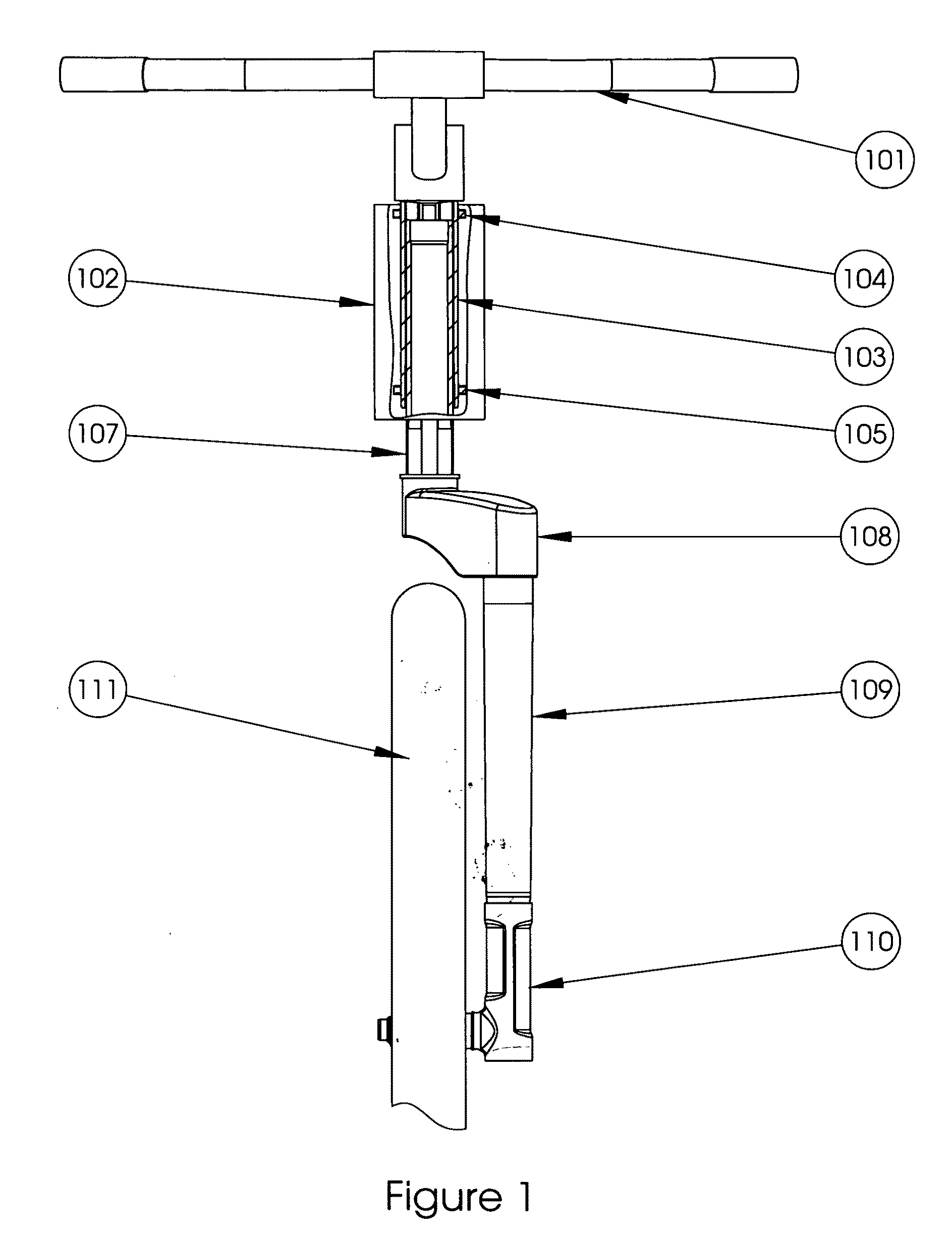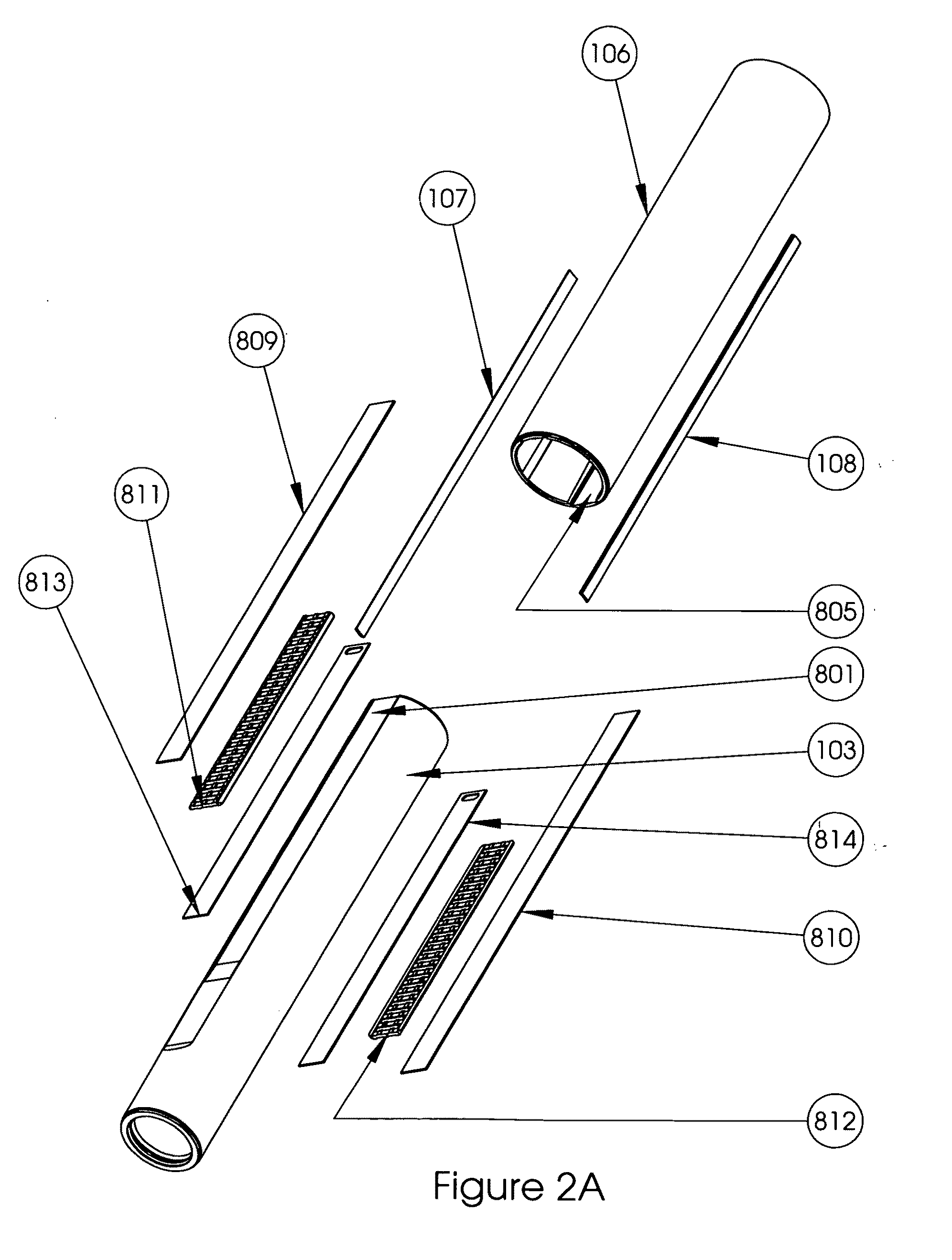Bicycle suspension system
a suspension system and bicycle technology, applied in the direction of frictional roller based transmission, steering device, cycle equipment, etc., can solve the problems of reducing the torsional stiffness of these types of assemblies, affecting the torsional stiffness of the suspension system, and undesirable static friction of the bushing, so as to reduce the torsional load, eliminate the components of the heavy suspension assembly, and increase the stiffness
- Summary
- Abstract
- Description
- Claims
- Application Information
AI Technical Summary
Benefits of technology
Problems solved by technology
Method used
Image
Examples
Embodiment Construction
[0035]FIG. 1 shows a front view of a front bicycle suspension system. Handlebars 101 are coupled to an outer tube 103 housed within a head tube 102 (partially shown). The outer tube 103 of the telescoping assembly is pressed into the head tube 102 using upper and lower journal bearings 104-105 to allow for steering rotation. Housed within outer tube 103 is an inner tube 107. Inner tube 107 telescopes within outer tube 103. Coupled to inner tube 107 is a fork crown 108 which is positioned forward to create the trail of the bicycle. Fork tube 109 is a tapered butted tube which is attached to fork crown 108 and a dropout tube 110. Dropout tube 110 contains a small hub stem (not shown) that rides inside the hub (not shown) of wheel 111. As the wheel 111 encounters a bump, the force is translated to inner tube 107. A damper housed in inner tube 107 (not shown in this view), dampens the shock of the bump by allowing inner tube 107 to translate within outer tube 103.
[0036]FIG. 2A is an exp...
PUM
 Login to View More
Login to View More Abstract
Description
Claims
Application Information
 Login to View More
Login to View More - R&D
- Intellectual Property
- Life Sciences
- Materials
- Tech Scout
- Unparalleled Data Quality
- Higher Quality Content
- 60% Fewer Hallucinations
Browse by: Latest US Patents, China's latest patents, Technical Efficacy Thesaurus, Application Domain, Technology Topic, Popular Technical Reports.
© 2025 PatSnap. All rights reserved.Legal|Privacy policy|Modern Slavery Act Transparency Statement|Sitemap|About US| Contact US: help@patsnap.com



